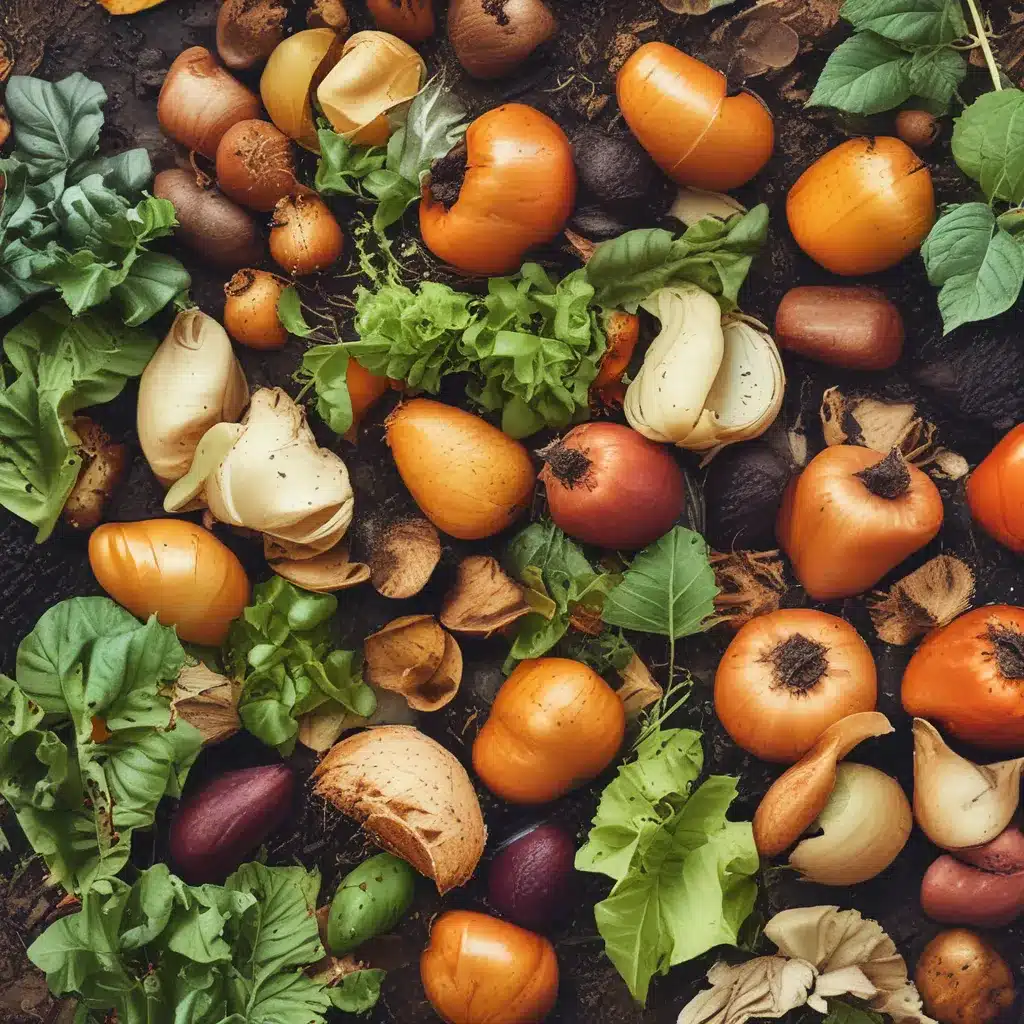
Composting 101: Turn Food Scraps into Gardening Gold for Your CSA
Ah, composting – the unsung hero of the gardening world. While it may not be the most glamorous task, let me tell you, this simple act of recycling food scraps and yard waste can transform your garden into a lush, bountiful oasis. As the owner of a community-supported agriculture (CSA) service, Thornappple CSA, I’ve seen firsthand the magic that a good compost pile can work.
The Compost Conundrum
Now, I know what you’re thinking – composting can be a bit of a daunting task, right? All that turning, monitoring, and ensuring the perfect balance of greens and browns. It’s enough to make even the most seasoned gardener want to throw in the trowel. But fear not, my fellow CSA members! I’m here to take the mystery out of composting and show you how it can be a game-changer for your garden.
The Benefits of Composting
Let’s start with the big one – the nutritional boost your plants will receive from homemade compost. Think of it as a superfood for your veggies, fruits, and flowers. By breaking down organic matter, compost releases a bounty of essential nutrients, including nitrogen, phosphorus, and potassium, that your plants will lap up like thirsty hummingbirds. Plus, the act of composting helps to improve soil structure, aeration, and water-holding capacity – all crucial factors for healthy, thriving plants.
But the benefits don’t stop there. Composting is also a fantastic way to reduce waste and be a more eco-friendly gardener. Instead of sending those food scraps and yard trimmings to the landfill, you can turn them into a valuable resource for your CSA garden. It’s a win-win for both your plants and the planet!
Composting 101: The Basics
Alright, let’s dive into the nitty-gritty of composting. The key to success is getting the right balance of “greens” (nitrogen-rich materials like fruit and veggie scraps, coffee grounds, and green plant matter) and “browns” (carbon-rich materials like dried leaves, shredded paper, and straw). The general rule of thumb is to aim for a 3:1 ratio of browns to greens.
Next, you’ll want to find a suitable spot for your compost bin or pile. Opt for a well-drained area that’s out of direct sunlight, and make sure to keep it moist but not soaked. Turning your compost regularly with a pitchfork or compost aerator will help oxygen circulate and speed up the decomposition process.
As I learned the hard way, it’s also crucial to be mindful of any potential contaminants in your compost materials, like persistent herbicides. Always do your due diligence and source your ingredients from reliable, organic sources.
Composting for Busy Gardeners
I know, I know – with all the demands of running a CSA, the last thing you probably want to do is spend hours a week tending to a compost pile. That’s where the beauty of “lazy composting” comes in. By layering your organic materials in a designated area and letting nature do its thing, you can create nutrient-rich compost with minimal effort.
Another time-saving tip is to set up a vermicompost bin – that’s right, a bin full of hardworking worms that will munch their way through your food scraps and turn them into liquid gold for your plants. These little decomposers are the MVPs of the composting world, and they’ll do the heavy lifting for you.
Compost in the CSA Garden
Now, I know what you’re thinking – how exactly do I incorporate all this lovely compost into my CSA garden? The options are endless, my friends! You can mix it directly into your planting beds, use it as a top dressing to nourish established plants, or even create compost tea to give your veggies and fruits a nutrient-packed boost.
One of my favorite ways to utilize compost is by making it the foundation of my raised garden beds. I’ll layer the bottom with a generous amount of well-aged compost, then top it off with a mix of high-quality soil and other organic amendments. This creates a nutrient-dense growing medium that’s sure to keep your CSA crops thriving.
The Composting Community
And let’s not forget the community aspect of composting in a CSA setting. Encourage your members to get involved by setting up a shared compost bin or offering workshops on the art of turning food scraps into gardening gold. Not only will this foster a sense of ownership and investment in the CSA, but it’ll also help reduce waste and create a more sustainable system for everyone involved.
So, there you have it – the lowdown on composting for your CSA garden. It may not be the most glamorous task, but trust me, the payoff is well worth the effort. With a little bit of know-how and a whole lot of enthusiasm, you can turn your food scraps into a veritable treasure trove of nutrients for your plants. And who knows, you might even have a bit of fun in the process!



